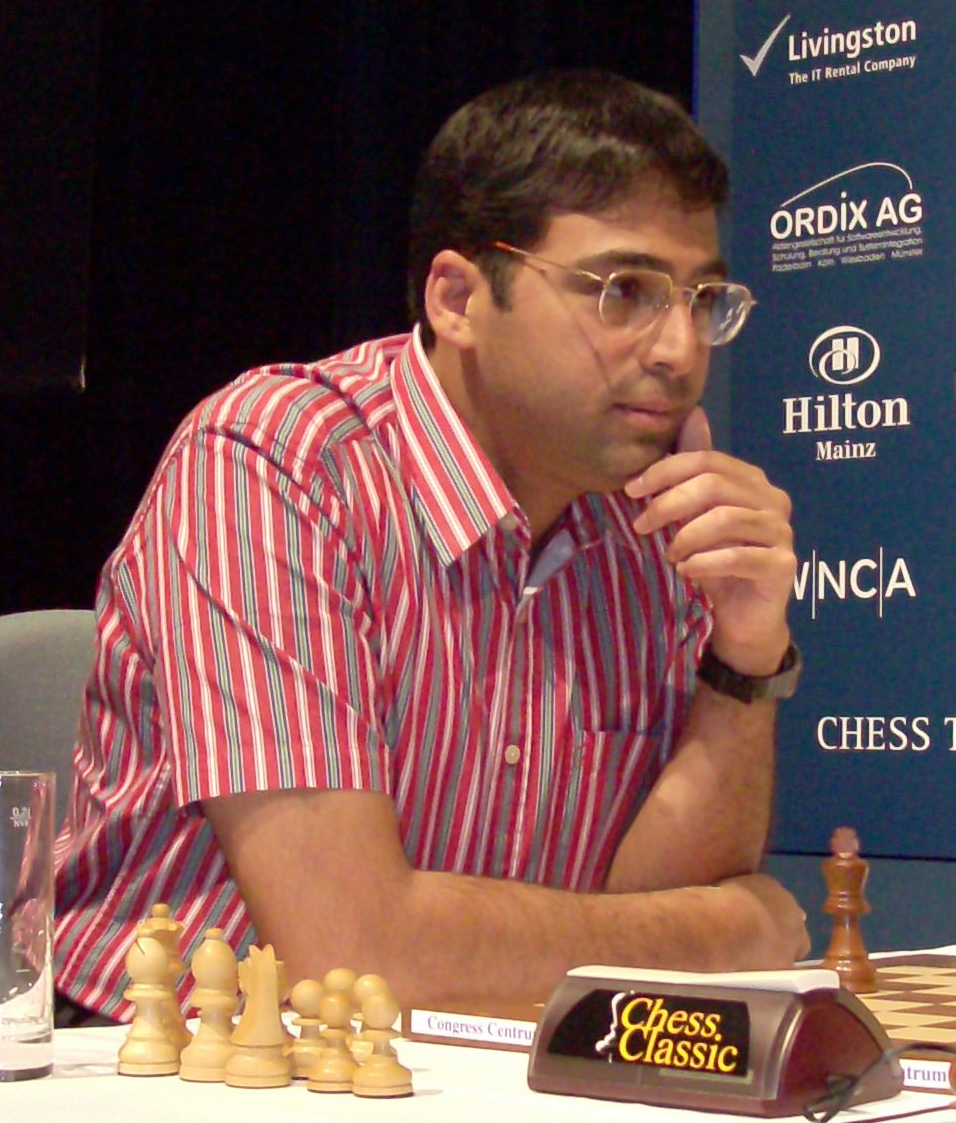- GM DanielNaroditsky
- | Mar 7, 2014
"Pawns are the soul of chess." In general, I loathe chess clichés, but some statements are so true, so deep, that they defy the notion of banality. Think about it. An inveterate patron of the Café de la Régence, an eighteenth-century gentilhomme who learned the game at a time when one's respectability in the chess community hinged on his tactical prowess alone, Andre Philidor had the wherewithal to proclaim that pawns - not queens, not kings, not stunning combinations, but pawns - are the soul of chess.

François-André Danican Philidor | Image Wikipedia
More than 250 years later, his audacious proclamation still rings true. Pawn structure (along with king safety, piece placement, and material count) is one of the critical benchmarks by which a position is evaluated. As such, modern chess players (especially at the amateur and club level) are extremely wary of damaging their pawn structure in any way. The reason is simple: one such imperfection - a pair of doubled pawns, for instance - can transform a position from tenable to strategically hopeless.
To be sure, this fear is well-founded. Since you can hardly un-double or un-isolate your pawns without either immense effort or cooperation from your opponent, you must consider any potential alterations in pawn structure meticulously. However, in my opinion, one of the key abilities in a grandmaster's arsenal is his capacity to understand when he can and should damage his own pawn structure.
In my previous article, I discussed the notion that chess is a game of trade-offs: to exploit the defects in your opponent's position, you must often voluntarily damage a certain aspect of your own position. In this article, we will push this idea one step farther by examining cases in which the only way to make inroads into the opponent's position consists of irreparably spoiling one's own pawn structure.
We will begin with a seminal example. It might be familiar to you (I've seen it featured in IM John Watson's excellent Secrets of Modern Chess Strategy), but I hope that my explanation and analysis will inform your understanding of the thought process that led up to Vishy Anand's most famous move.
Ivanchuk (2720) vs. Anand (2690)
Linares (match) | Linares | Round 1 | 1992 | ECO: B66
After blitzing out 12 moves of Classical Sicilian theory, Vassily Ivanchuk bailed out into an ostensibly balanced endgame by forcing a mega-trade of queens and knights. Now, after 17...Bxf6, White would have a pleasant choice between 18.Rxd2 Rd8 (18...Ke7 19.h4, as given by Anand in his ChessBase commentary, is inferior) 19.h4 d5 20.exd5 Bxd5 21.Bg2 followed by a timely f4 and 18.Bxd2!? d5 19.exd5 Bxd5 20.Be2 Rd8 21.Rhf1 Bg5 22.f4, both of which lead to approximate equality (and, in all probability, to an early draw).

Miguel Najdorf | Image Wikipedia
Najdorf and Classical Sicilian players know that White's English Attack pawn structure on the kingside (e4-f3-g4) can be the harbinger of a lethal attack in the middlegame, but a shackling liability in the endgame. The reason is twofold: firstly, in the endgame, the weakness of the backward f3 pawn is accentuated. Secondly, and most importantly, Black has the possibility of breaking through with ...h5, when h3 is impossible on account of ...hxg4 fxg4 Bxg4, leaving the rook on h1 to hang. Unfortunately, after 17...Bxf6 18.Rxd2, h5 is ineffective on account of 19.g5, and White locks up the kingside to his favor. Can White's riposte be prevented? Well...yes, with the positionally suicidal 17...gxf6. But after 18.Rxd2 h5, is Black's pawn structure all that important?
Ivanchuk (2720) vs. Anand (2690)
Linares Match | Linares | Round 1 | 1992 | ECO: B66
Of course, 19.g5 is now impossible, and so is 19.h3. After 19.gxh5 Rxh5, White's own pawn structure threatens to fall apart, and Black will follow up with ...f5, undoubling his pawns and securing a dominant endgame position. If White keeps his pawn on g4 with 19.Be2 or 19.Rg1, Black will clearly be in the driver's seat after 19...hxg4 20.fxg4: White's pieces are undeveloped and uncoordinated, the e4 and g4 pawns are weak, Black's rook occupies a dominant post on h8, and Black's "weak" pawns are safely defended by the e7 bishop and do not change the evaluation of the position. It certainly bears mentioning that you should not make any capture automatically (time permitting, of course).
Sometimes, the latent features of the position will require you to think outside the box and make a move that appears paradoxical or irrational at first sight. Anand finished off the stunned Ivanchuk in style. Take a look:
Above all, this game illuminates both the exigence and the concreteness of modern chess. It is always painful to cripple your position - especially in a situation in which static weaknesses are particularly noticeable - but it is crucial to understand that taking advantage of a temporary deficiency in your opponent's position often necessitates drastic measures. Besides, Black's pawn structure after 17...gxf6 sure looked ugly, but all of his "weak" pawns were defended by the e7 bishop and therefore unattackable. On the other hand, White's lack of piece coordination and Vishy's monstrous rook on h3 made White's pawns easy targets.

Viswanathan "Vishy" Anand | Image Wikipedia
Of course, it is far easier to make a concession for concrete gain than for nebulous, long-term compensation. For example, once Anand spotted the idea of ...h5, noticed that White is nearly paralyzed after ...Rh3 and ...Bc4, and calculated a few quick variations, it was not too difficult to decide on 17...gxf6. After all, Black was reimbursed almost instantly for his positional investment: White was way too tied up to utilize Black's damaged pawn structure and weak central squares. But what if you cannot foresee the end result of this investment with total certainty?
I have seen many players complain that they were afraid to double their pawns or live with anisolani (I was intrigued to find that this word actually means "islanders" in Italian, but we will stick to the chess definition for now) because their compensation was not concrete enough. To this point, my experience has convinced me that piece placement frequently trumps pawn structure; it is often perfectly acceptable to weaken a pawn in order to penetrate weaknesses in your opponent's position or to force his pieces onto more passive squares. This might appear a bit vague and inconclusive, but hopefully, the following example will elucidate matters.
Naroditsky (2472) vs. Zhang (2018)
Philadelphia Open | Philadelphia | 28 Mar 2013 | ECO: C90
The situation on the board is quite complex. Black has a noticeable space advantage, two menacing central pawns (e5 and f5), and White's central pawn structure is clearly deformed. Black does not immediately threaten to win the d5 pawn, but the protective c3-c4, locking in the bishop and creating a hole on d4, is rarely desirable in such cases.
From a static standpoint, then, Black's advantage is clear. Therefore, I must use the temporary lack of coordination within Black's army, and perhaps the x-ray along the e-file, to my advantage before Black secures his advantage. One idea that came to mind immediately was 1.h3 Nf6 2.Nh4!?, threatening both Nxf5 and Ng6. However, after 2...Nxd5! 3.Ng6 Qb7 4.Nxf8 Nf4 Black obtains a pawn and a fearsome initiative for the exchange - no bueno!
Another idea is to ingrain a knight on e6, but how can this be done? Unfortunately, while ...exd4 will be impossible after Nd4 due to the aforementioned x-ray, the c-pawn will gladly do the honors. With 1.b4 cxb4 2.cxb4, White can pave the way for his knight, but totally ruins his central pawn structure in so doing. After 2...Nb7, White's "center" will consist of two doubled, isolated, weak pawns, while Black's central pawn mass will remain intact.
However, consider the other side of the coin. After 2...Nb7, Black's knight will be permanently out of commission. In addition, if White succeeds in penetrating e6 with the knight and supporting the d5 pawn with Bb3, his ruined pawn structure will not be so noticeable. Quite simply, Black's pieces will be so passive - so limited in their mobility - that he will not have enough firepower to punish White for his audacity. Of course, this is only a general outline of my thought process (calculation was also involved), but hopefully, it conveys a sense of how paradoxical ideas are born. My plan worked like a hot knife through butter:
My point, then, is that you must situate your pawn structure within the framework of your position; it is a defining characteristic but not the defining characteristic. In the game we just examined, I certainly could not calculate the consequences of 19.b4 to the end, but I sensed that the terrible placement of the b7 knight, coupled with the ideal coordination of my own pieces and the gaping weakness at e6 would heavily outweigh my ruined pawn structure.
In a similar vein, you must sometimes mobilize your pieces, not because you are looking for a way to transform your initiative into a tangible advantage, but because your position is too passive to hold up against your opponent's pressure. A solid pawn structure might well increase your defensive chances, but it will rarely constitute an insuperable obstacle for a mobilized and coordinated army. As the following game will show, even a serious weakening of your pawn structure might be well worth it if you succeed in altering the course of the game and throwing your opponent off track.
Note: I first discovered the following game in Garry Kasparov's informative volume Opening Revolution in the 70s, but here we will focus on Yusupov's thought process, rather than on thematic Hedgehog ideas.
To conclude, let us quickly reiterate some of the circumstances in which it might be permissible to damage your pawn structure:
- If you see a way to take advantage of a transient defect in your opponent's position. In Ivanchuk-Anand, Black could only exploit the temporary awkwardness of White's pieces with ...gxf6.
- If you can improve your piece placement or worsen your opponent's. In my game against Zhang, I severely weakened my central pawns, but the tremendous disparity in piece activity (knight on e6 vs. knight on b7, queen on f3 vs. queen on e7, etc.) made these weaknesses impossible to utilize.
- If you see an opportunity to change the (undesirable) course of the game. In Taimanov-Yusupov, ...g5 introduced gaping holes in Black's position, but it was the only way in which Black could mobilize his heavy pieces and obtain counterplay against White's king.
- If there is a concrete tactical justification. If you must damage your pawn structure in order to further your attacking chances (or make a combination possible), do not let positional "rules" stand in the way of an objective decision.
Modern chess is a very concrete game, and it therefore goes without saying that you must take into account the idiosyncrasies of every individual position before making a committal decision. Still, I believe that it is fallacious to suppose that pawn structure usually outweighs less tangible (or at least less global) positional or tactical considerations. While your pawn structure literally defines your position, it can be rendered relatively unimportant by its other features. I certainly do not mean to denigrate the significance of pawn structure - my goal is merely to illustrate how modern grandmasters are able to ascertain how and when direct positional considerations should be flouted.
The themes of my first two articles (not counting the introduction) are deliberately tied together; I am very interested in the way positional thinking has changed in the past few decades, and I hope that I have so far succeeded in clearing a path through the thicket of positional complexities. So long!
